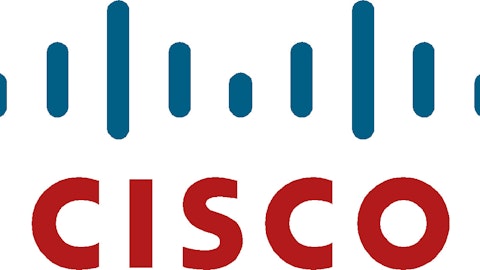Novo Nordisk A/S (ADR) (NYSE:NVO) recently got some bad news from the Food and Drug Administration: a request for additional information about a key insulin product. That notice could delay the new treatment’s launch until at least 2015 — a big delay, but one the company can probably handle.
Novo Nordisk started treating people with insulin in 1923. Today, insulin is the company’s core market, with a 49% share of the world market based on volume. While the company has other areas on which it focuses, including hemophilia and weight loss (intimately tied to diabetes and insulin), it derives nearly 80% of its revenues from its diabetes business. Insulin, then, is ultra-important to Novo’s long-term success.
This market holds great opportunity, too. For example, the company believes that there are over 370 million people with diabetes in the world today. It expects that number to increase to 550 million by 2030. The United States is one of the leading markets, largely because of an aging and increasingly overweight population, factors that increase the incidence of type 2 diabetes. China, however, is an up-and-coming market for the Novo as well.
Novo Nordisk A/S (ADR) (NYSE:NVO) estimates that there are over 90 million people in China with diabetes, making it the world’s largest diabetes market. Interestingly, the same reasons that have made the United States such an important market are increasingly hurting Chinese citizens. “With economic growth comes urbanisation, with urbanisation come sedentary lifestyles – and then diabetes follows.” Management estimates that 90% of people with diabetes have type 2.
Less Shots
The big pushes in diabetes research are to reduce the number of times that a diabetic has to medicate, and to improve the medication delivery method. Injection is the main method for getting insulin into the body. Clearly, that’s not a desirable approach, so reducing the number of times that a patient has to inject themselves, or completely altering the way in which insulin is delivered, would be a huge benefit and likely lead to a blockbuster drug.
This is where the company’s once-a-day Tresiba comes into play. The drug has been approved in Japan, Mexico, and in the European Union. However, in early 2013, the FDA chose not to approve the drug, asking instead for additional research into Tresiba’s potential cardiovascular risks.
A Big Hit
After receiving approval in the other markets, the FDA’s decision came as something of a shock to the market. At one point following the news, Novo Nordisk’s shares were down as much as 17%. While the shares rebounded from those depths, the announcement sent the shares notably lower.
Providing the research to the FDA will be expensive and time-consuming. In fact, Reuters reported that Novo’s Chief Scientific Officer, Mads Thomsen, said that the company probably wouldn’t be able to provide the information until after 2014. Some market watchers estimate that even 2015 could be an aggressive expectation. A multi-year delay is clearly not a good thing for the company’s prospects, since the U.S. market is so important to its business.
Competition
Worse, such a delay gives competitors the opportunity to gain market share with their own products, and advance their own research efforts. Then biggest beneficiary of the FDA request is expected to be Sanofi SA (ADR) (NYSE:SNY). This company’s Lantus is a long-acting human insulin analog that is already on the market. It is a once-a-day injection, and would have seen the most pressure from a new once-a-day insulin product coming from the industry leader.
Sanofi SA (ADR) (NYSE:SNY) shares advanced on the FDA news. However, it is important to remember that Sanofi is a much more diverse company than Novo Nordisk. So the impact would be notable on a drug that earned 3.9 billion euro in 2011. While that figure represented the bulk of the company’s diabetes sales, diabetes sales only represented about 15% of Sanofi’s top line. S, Novo’s risks of a failure are far greater than Sanofi’s risks from a Novo success. And, Like Novo, Sanofi isn’t standing still, so Novo’s delay gives its main competitor a chance to further develop its own new insulin products.
With regard to new products, Johnson & Johnson (NYSE:JNJ) is working on a “wearable” insulin patch. The company recently highlighted the ease with which customers will be able to administer insulin with the product. The patch came from work done by recently acquired Calibra Medical. That company, which was privately held, was bought in the third quarter of 2012 specifically for the patch technology, which was described as “a unique, wearable three-day insulin patch” in JNJ’s third quarter earnings release.
This would be an interesting advance, and one that moves away from needles. Since Johnson & Johnson (NYSE:JNJ) hasn’t brought it to market just yet, it is hard to tell how much of an impact it will have. However, what is clear, is that Novo’s problems give Johnson & Johnson more time to both get it to market and, assuming approval, garner a customer base.
Not the End of the World
Despite the obvious competition in the space, which goes well beyond the two companies noted above, Novo Nordisk’s size and market position in diabetes should provide it ample opportunity to continue growing. The market itself is still growing in size and Novo is a well respected company with lots of product in the market. A several year delay is indeed bad, but it isn’t he end of the world.
Backing up this assessment is the fact that Novo has virtually no debt on its balance sheet and a large cash balance. Moreover, while this one drug is important, it isn’t the only drug in the company’s pipeline. In fact, investors might find the recent weakness is a good buying opportunity.
The article How This Drugmaker Will Deal With A Diabetes Delay originally appeared on Fool.com and is written by Reuben Gregg Brewer.
Copyright © 1995 – 2013 The Motley Fool, LLC. All rights reserved. The Motley Fool has a disclosure policy.







